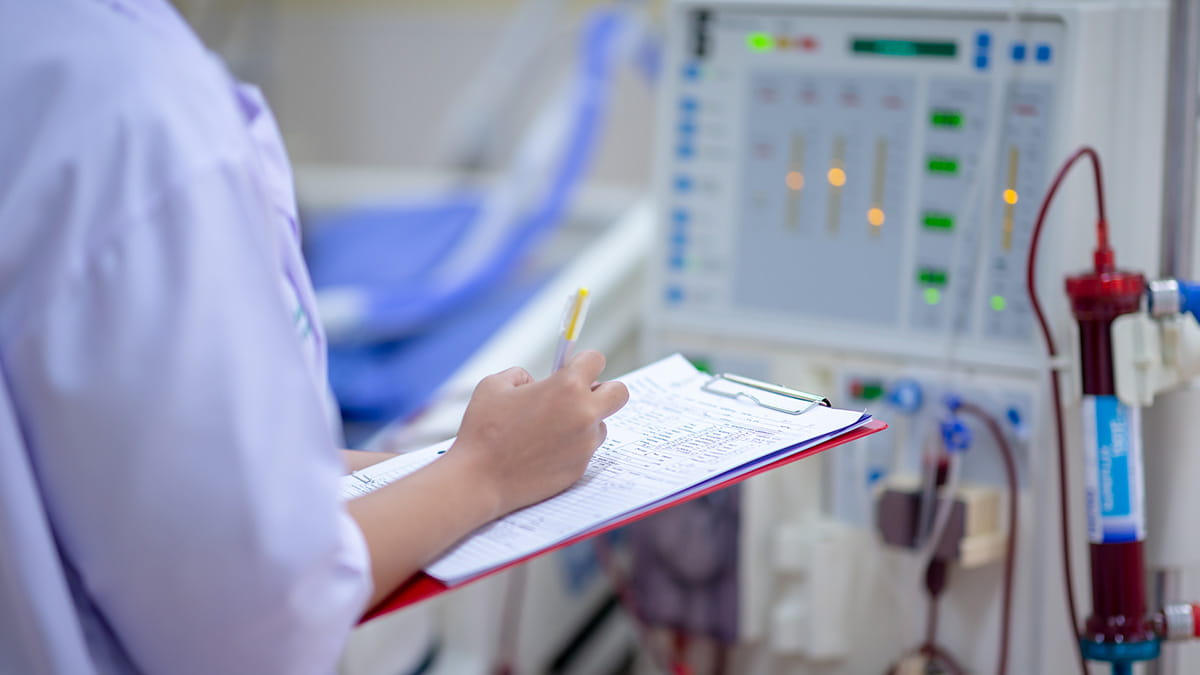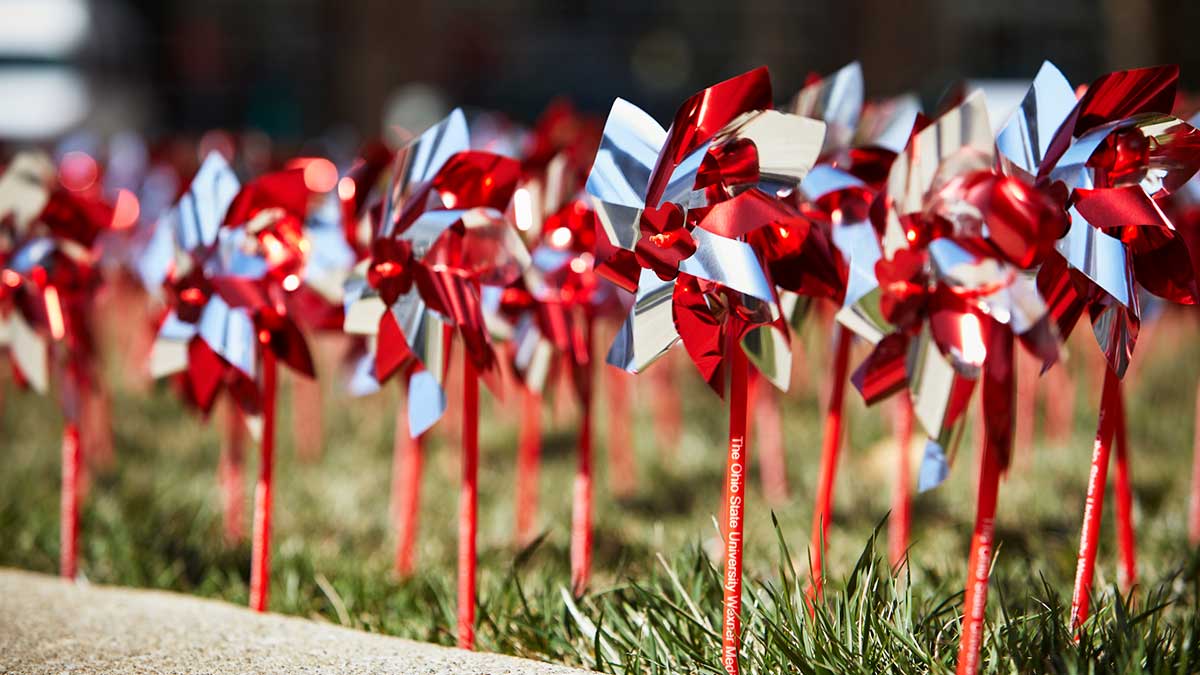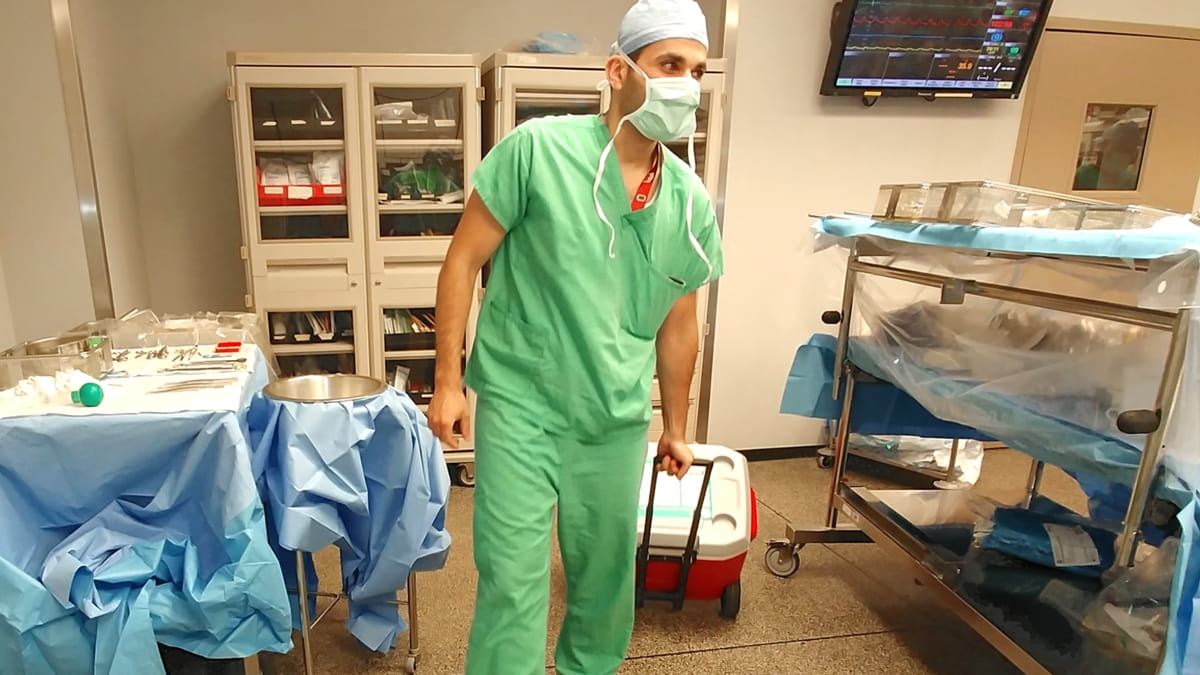Life saving links: 5-way kidney donation chain at Ohio State

Imagine you can save the life of someone you love by saving the life of someone you’ve never met. Five organ donors recently did exactly that in a single day at The Ohio State University Wexner Medical Center.
“You don’t have to know someone to change their life,” says Todd Pesavento, MD, director of the kidney transplant program at Ohio State.
Each recipient had a relationship with a donor, but not their donor from whom they received their lifesaving organ donation.
Robin Petersen-Webster, coordinator for the donation exchange program, works to match willing kidney donors with needed recipients.
Think of it like a giant jigsaw puzzle. This video shows how it worked:
The need for kidney donors
There are between 98,000 and 100,000 people in the country waiting for a kidney transplant – that’s almost enough to fill Ohio Stadium. The regional median wait-time for patients to receive a kidney transplant is a little over four years, while some people can wait more than 10 years. Ohio State Wexner Medical Center has an average wait-time of 37 months, which is about 13 months shorter than the regional average, thanks to the extreme generosity of family members and other living donors in central Ohio, explains Dr. Pesavento.
Benefits of living kidney donation
Exact-match living donations are remarkable, not only due to the altruism of the donors, but also because of the overall health benefits to the recipients. Patients who receive kidneys from healthy, living donors have a 93 percent chance of five-year survival, compared to the 75 percent chance associated with deceased donor transplants, according to Dr. Pelletier.
Living kidney donation is a mutually beneficial exchange: The recipient receives a lifesaving healthy kidney, and the donor maintains a healthy kidney. With living kidney donation, the procedures for the donor and the recipient traditionally happen concurrently. As a result, the donated kidney is without blood for only a very small amount of time, which minimizes potential complications from the transplant. Additionally, unlike with deceased organ donations, the kidney doesn’t have to be packed in ice and transported for an extended time (12-24 hours), so it is in the best possible condition for the recipient.
After the recent kidney donation exchange at Ohio State, the kidney donors and their recipients met for the first time.
“There aren’t words to describe the excitement and energy of bringing recipients face-to-face with their kidney donor after surgery. This is extremely rewarding work! We owe it all to our generous donors,” says Petersen-Webster.
Am I eligible to donate?
- You must be in good health and at least 18 years of age.
- Don’t assume you’re ineligible to donate even if you were ruled out from donating a kidney in the last five to 10 years.
- Visit Ohio State’s living donor page for more information, or register as an organ donor on our Buckeye for Life page.





